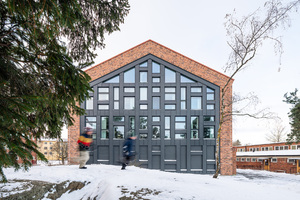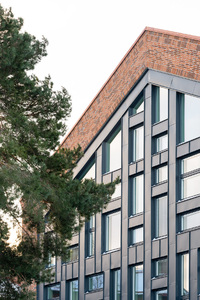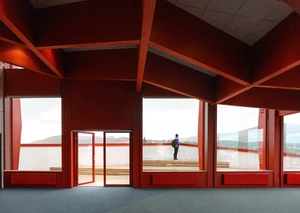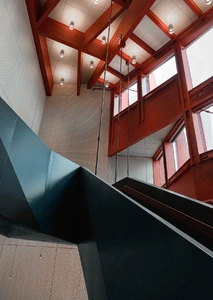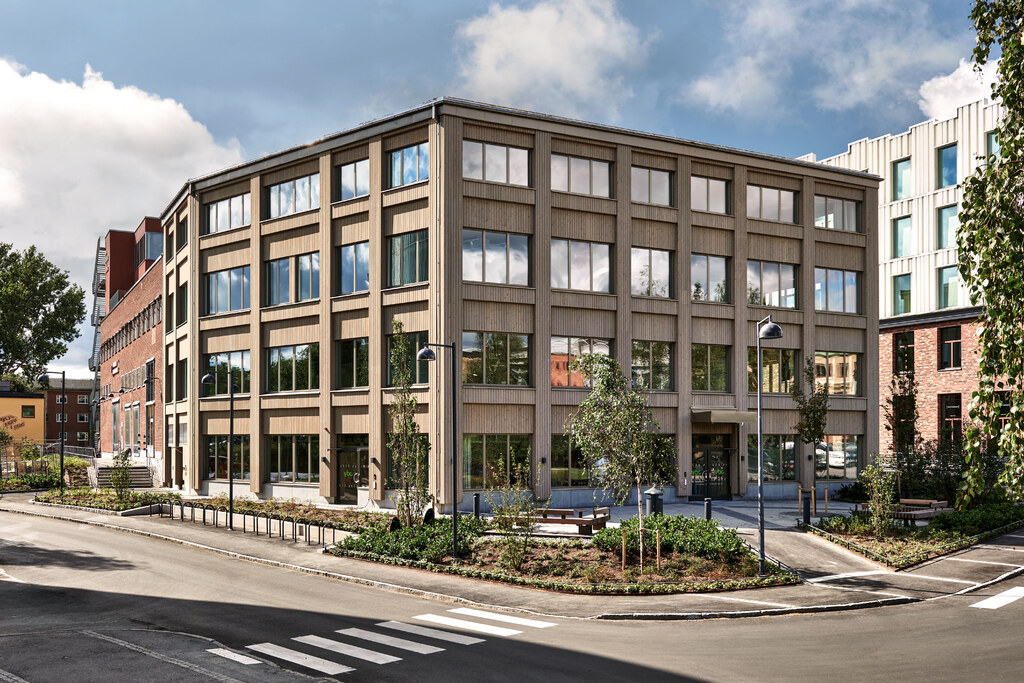
A wooden school in Stockholm Wood City
Campus Sickla is part of Stockholm Wood City, an ambitious urban project in wood developed by Atrium Ljungberg, designed by liljewall . The vision for Sickla is to create a hub for sustainability, innovation and well-being - in a vibrant mix of workplaces, housing, education, culture and services. The extension, which covers approximately 2,500 square meters, is built with a wooden frame and wooden facades. These material choices contribute to an architecture that strengthens the district's long-term goal of promoting resource-efficient and modern urban development.
Year
2024 - 2025
Location
Markusplatsen 5 A, 131 54 Nacka
Customer
Atrium Ljungberg
Contact
Tove Svensson
liljewall
0708-82 69 26
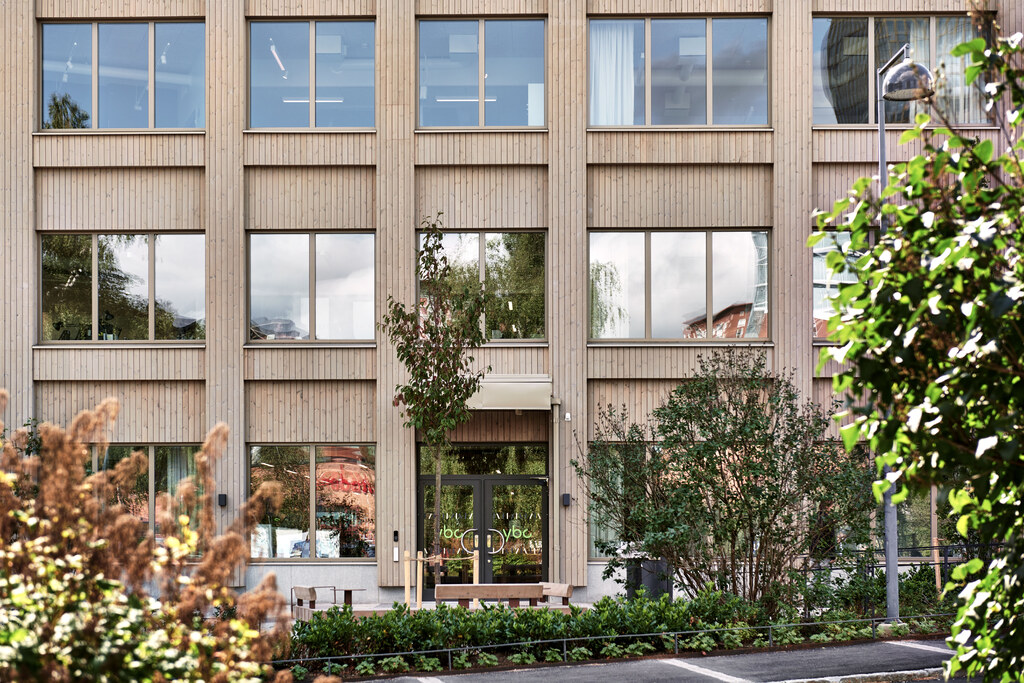
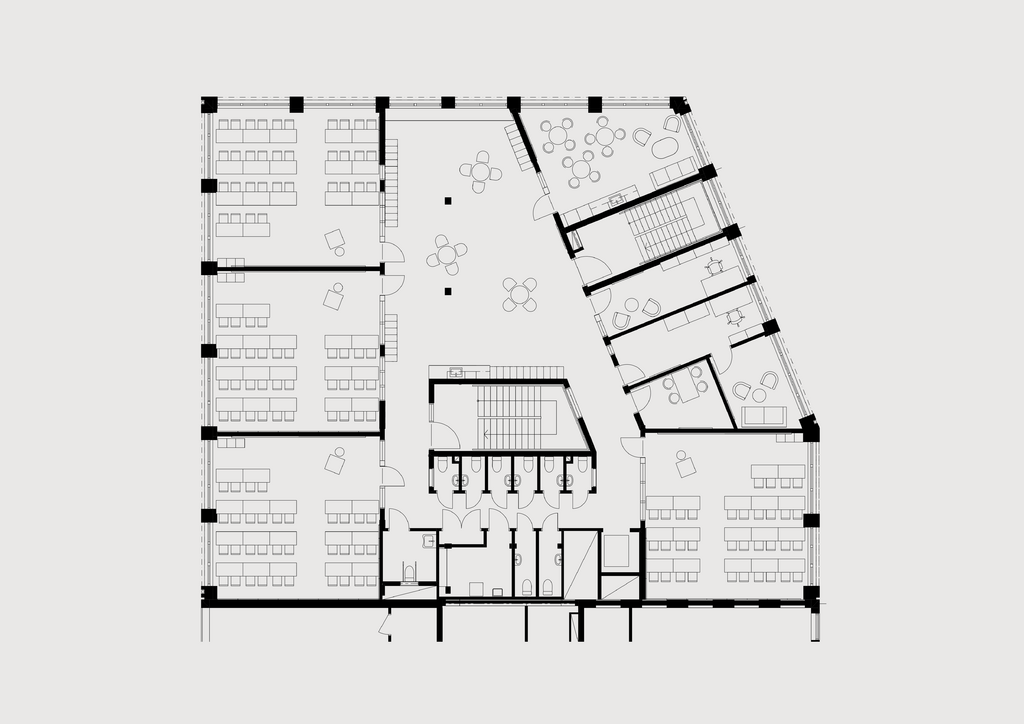
Architecture that builds bridges between past, present and future
A place carries layers of stories shaped by historical eras, some clearly visible while others lie hidden and waiting to be discovered. Campus Sickla’s architecture aims to highlight and amplify these stories, creating a deeper connection between the history of the place and the school’s future role in the area.
The industrial character, which is a central part of Sickla’s identity, is reflected in the building’s facades. The load-bearing structure takes on a prominent role both inside and out, and the repetitive, symmetrical design helps to strengthen the site’s distinctive character. Campus Sickla’s design adds a new “annual ring” to Sickla’s history, where the industrial aesthetic is reinterpreted and adapted to a contemporary context.
In addition to its architectural significance, the building also takes on a social responsibility. It is designed to positively impact people’s lives and the place as a whole. In Sickla’s continued development, it is crucial to promote a mixed and inclusive district where different functions and needs coexist. The building will function as an accessible and welcoming meeting place that is open to everyone, regardless of background or ability. In addition, it contributes to a sustainable future, not only through energy efficiency but also by minimizing resource use and promoting responsible management of our shared environment.
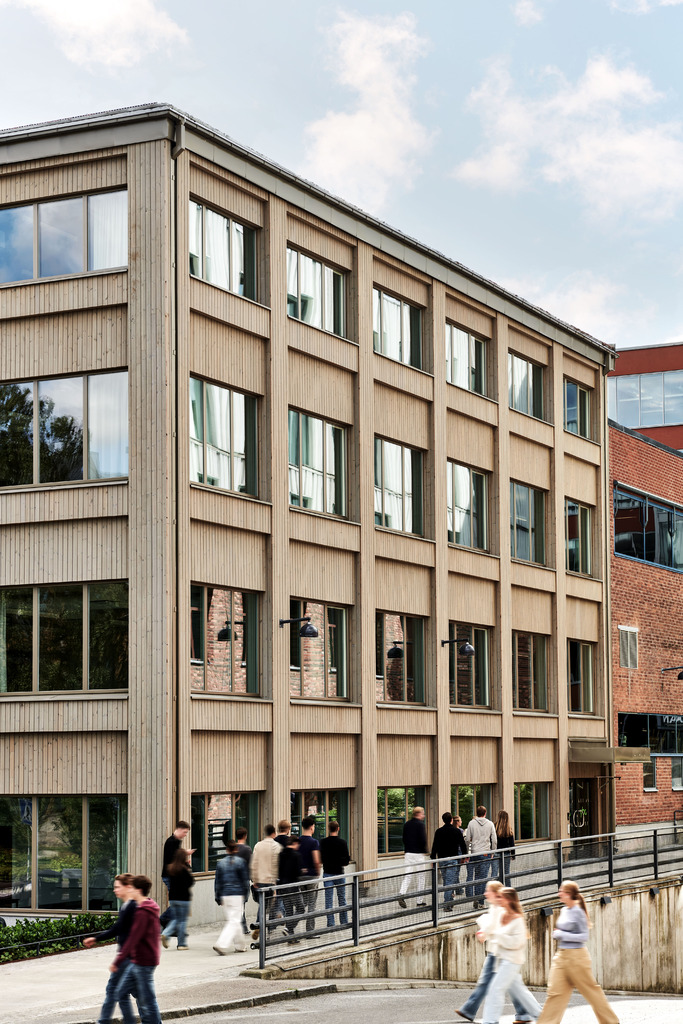
The supporting structure plays a prominent role both inside and out, and the repetitive, symmetrical design helps to strengthen the distinctive character of the place.
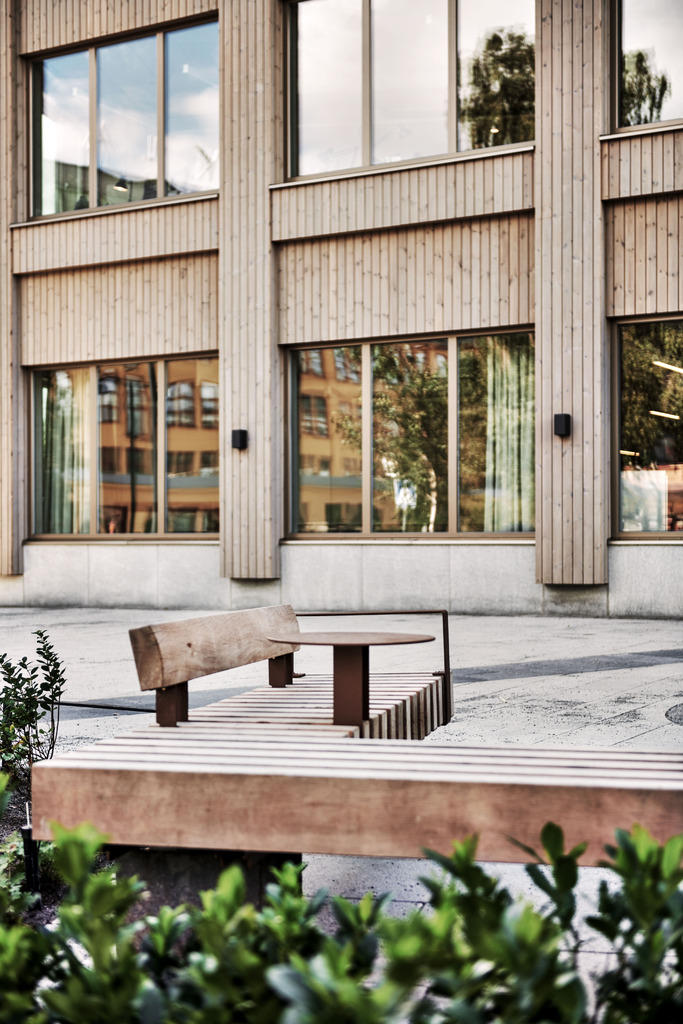
A place for a break or study in the green.
The Campus Sickla extension is characterized by wood with a wooden frame, exterior and interior. The building reflects sustainable construction with high environmental standards and environmentally friendly materials.
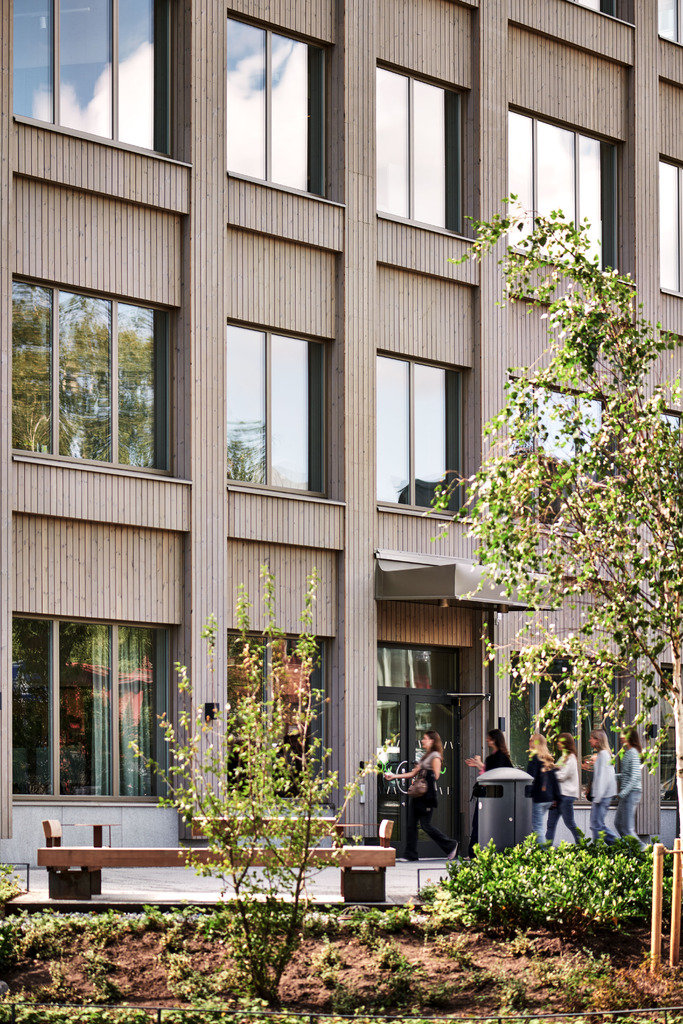
Welcome!


Bright classrooms with a beautiful view of the district.
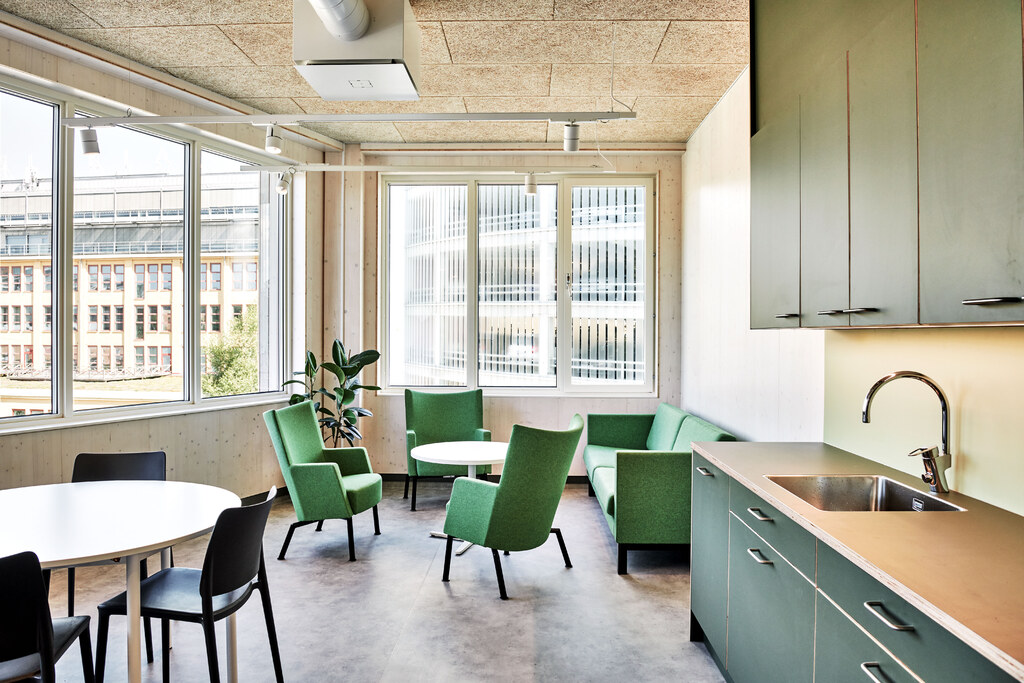
Green has been used as a calming accent color in the interior to create a calm and harmonious feeling.
The impact of wooden schools on learning
Wooden schools have a significantly lower carbon footprint than buildings made from traditional materials and are a sustainable alternative that helps combat climate change. Wood absorbs and stores carbon dioxide during its growth and continues to bind it even when used as a building material, leading to reduced greenhouse gas emissions.
Research shows that wooden schools are not only good for the environment but also for human well-being. Students in wooden environments experience lower stress levels, better concentration, fewer conflicts and improved school results. Wooden surfaces have a calming effect that can reduce cortisol levels and also stimulate creativity compared to artificial surfaces.
Here, the project team has been involved in every step of the process to maximize material efficiency and minimize waste. By carefully selecting materials and optimizing their use, an environmentally friendly and long-term sustainable building has been achieved, without compromising stability, durability or lifespan.
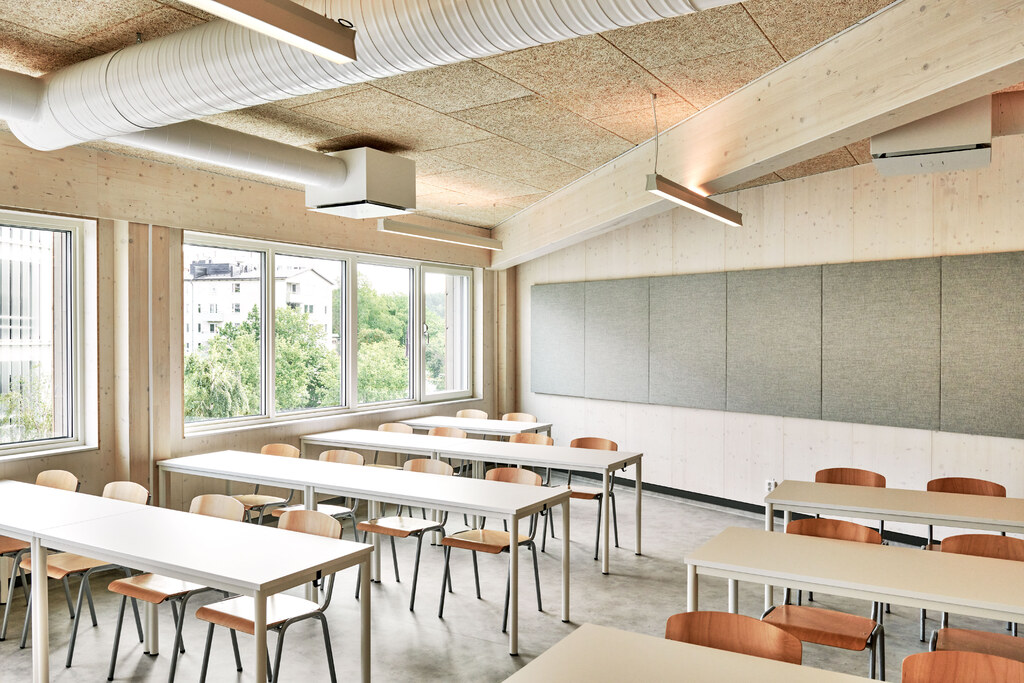



“Campus Sickla will be an accessible and welcoming meeting place that strives for BREEAM Excellent certification. The goal is to contribute to a sustainable future, not only through high energy efficiency but also by minimizing resource use and creating long-term responsible management of our common environment.”
Veronica Sundqvist, arkitekt, Liljewall
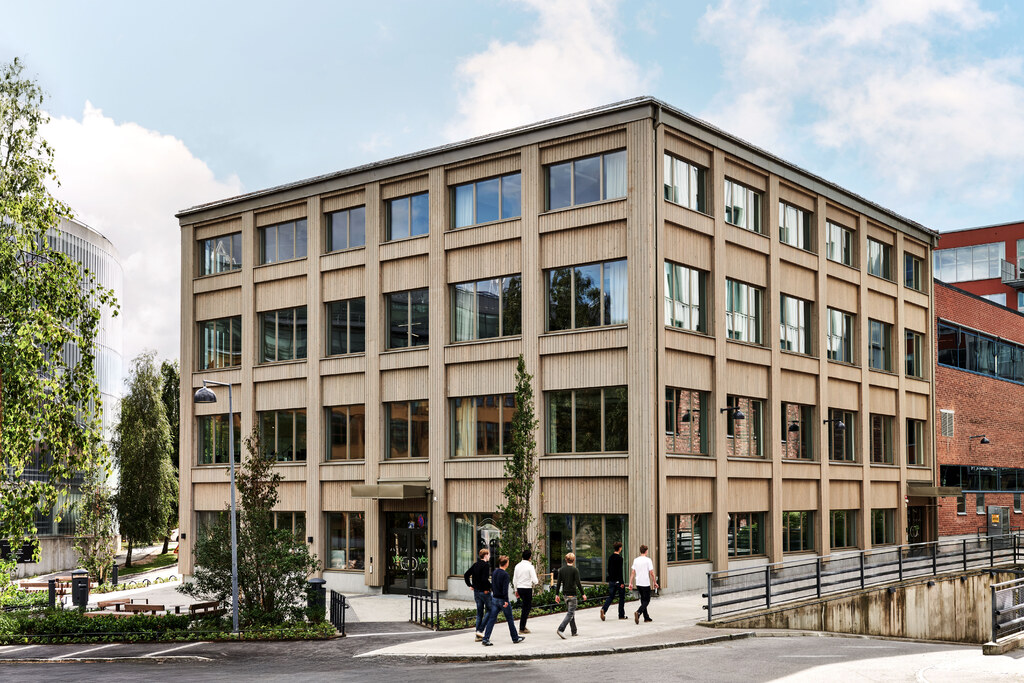
Project team
-
Project manager architect
Veronica Sundqvist
-
Managing architect
Jana Mooses
-
Civil engineer
Johan Lindqvist
-
Photographer
James Stokes
-



